. . . . . . . . . . . . . . . . . . . . . . . . . . . . . . . . .
"Overture"
. . . . . . . . . . . . . . . . . . . . . . . . . . . . . . . . .
"Who is this angel, this angel of music..."
To begin, I'll say that the musical is only a semblance of the book by French author Gaston Leroux. I read the latter during rehearsals, and despite its differences, the novel's sinister ambiance - the rat-strewn cellars of the Paris Opera, mid-19th century - stirred a fearful curiosity I've learned to use in the show.
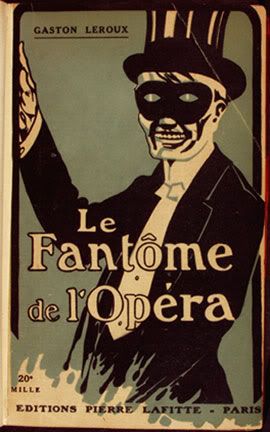
The novel concentrates much less on the musical's "pre-opera diva" protagonist Christine and much more on the attempts of her wealthy suitor Raul to apprehend the opera's "Phantom," a deformed man named Erik who kidnaps Christine after her first performance as lead. Raul is approached by an ambiguous character called "the Persian" who lives in the bowels of the opera house and associates himself with Erik through their shared time in India, the personal knowledge of whom he knows will help Raul in his efforts to save Christine.
Totally absent from the stage production (and regretfully so, I must say), the Persian offers narrative insight into Erik's troubled past and the malevolent motivation behind his gruesome actions. Entire chapters are devoted to the Persian's accounts, the most important being his explanation of their acquaintance. Erik, commissioned by a czar in India to build an architecturally elaborate palace impenetrable by the czar's enemies, is suspected of potential treason as he is the only person who could navigate an enemy through the palace's many labyrinths. Paranoia causes the czar to want his architect executed, so he employs the Persian to complete the task. However the Persian, similar to the huntsman in Snow White's tale, takes pity on his victim and fakes the execution, exiling him to Paris and thus saving his life.
And here is where the plot of the musical begins. At the beginning of the show, all we know of the deformed Phantom is that he is gifted as both musician and architect and that he has become perversely obsessed with a young opera singer, so much so that he pretends to be the spirit of her deceased father and commits violent crimes to obtain her love. We only see how his physical insecurities and deranged desire for ultimate power over Christine drive him to insanity; nothing is ever said of what he's endured in the past.
To be honest, the book was somewhat dry at times, and the musical is absolutely beautiful and redemptive in its depiction of Christine's forgiving relationship with the Phantom. But I'm grateful to have learned some historical (be it fictional) background into the Phantom's troubled psyche.
I also learned from the novel that the underground labyrinths and lakes of the Paris Opera actually exist! They were built as an anti-irrigation system so that the opera wouldn't flood and were also used as a sort of "underground railroad" during the Revolution.
. . . . . . . . . . . . . . . . . . . . . . . . . . . . . . . . .
"Andre, please don't shout. It's publicity, and the take is vast. Free publicity!"
"But we have no cast..."
My fellow castmates Erin and Megan also contributed to my interest in Phantom trivia. Erin brought a book called The Complete Phantom of the Opera to a rehearsal one night, and I must have spent at least an hour flipping through the history of the tale in all of its forms: literature, film, television, and stage theater. The best part was the book's inclusion of artwork: the early illustrations of Joseph Hope Williams, vintage movie advertisements/photo-clips from different film versions including Rupert Julian's 1925 silent adaptation with Lon Chaney, and Degas-inspired paintings done by Robert Heindel that capture different scenes from the original musical in London.
Joseph Hope Williams
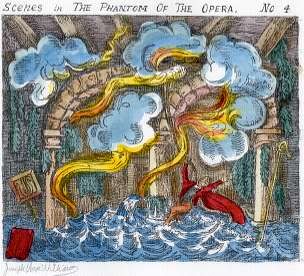

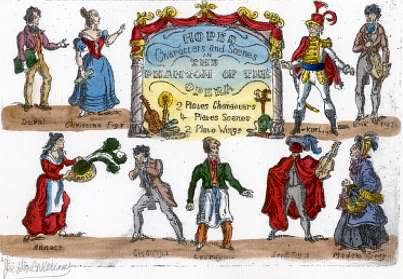
Rupert Julian's 1925 version
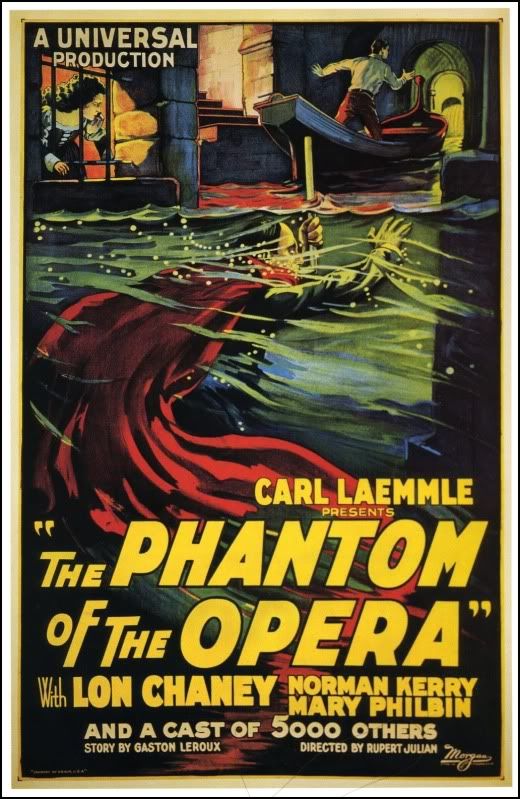
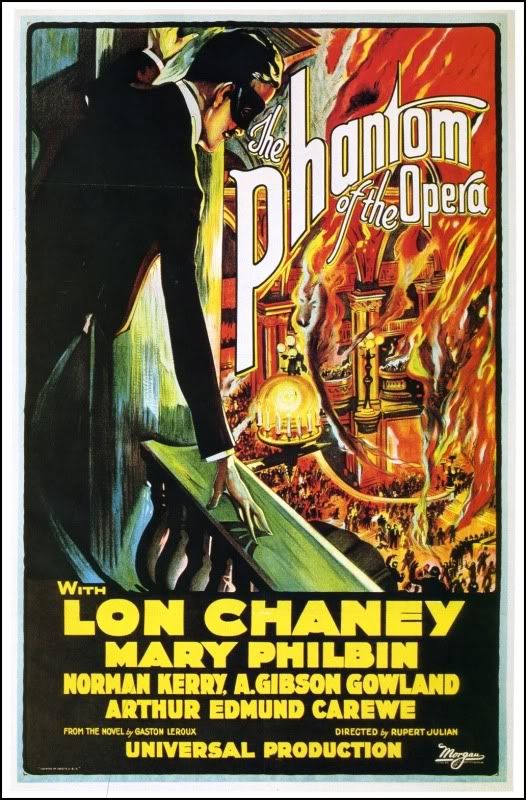
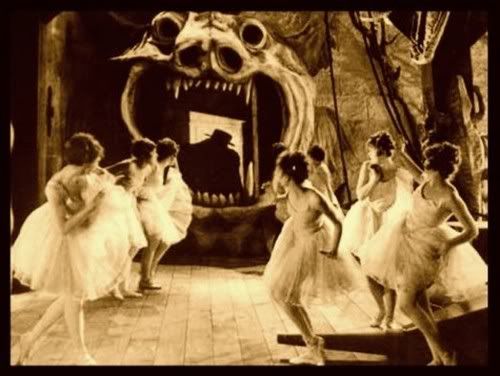
Arthur Lubin's 1943 version
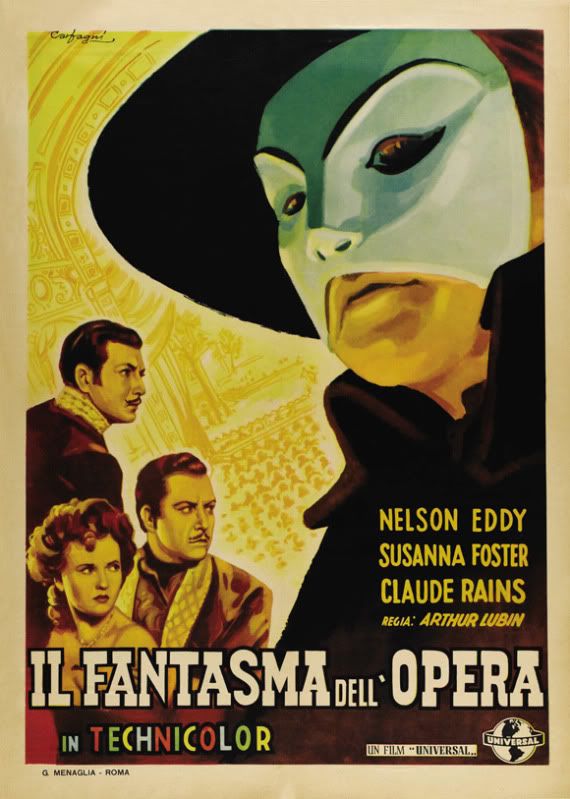
"I'm Here, I'm Here, I'm Here"--Robert Heindel
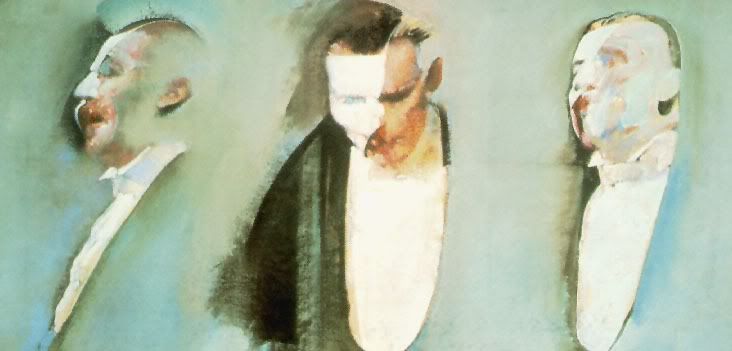
"The End of Innocence"
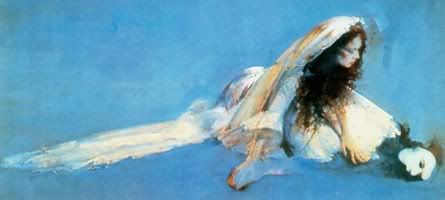
"Phantom Dancers" [My personal favorite, as my character Meg is one of the ballerinas ;]
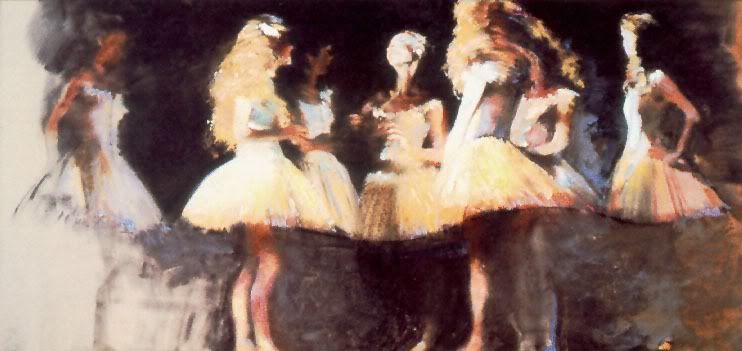
"Sarah and Michael, Music of the Night"
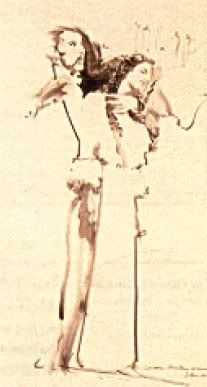
"The Phantom, Michael Crawford"

"The Phantom of the Opera"
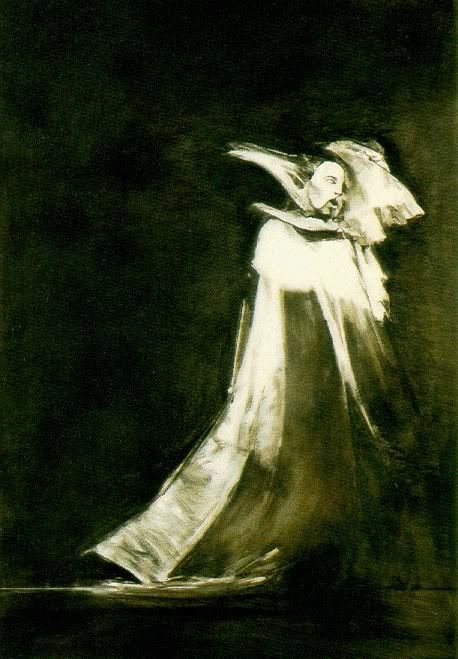
"The Phantom, Michael Crawford"
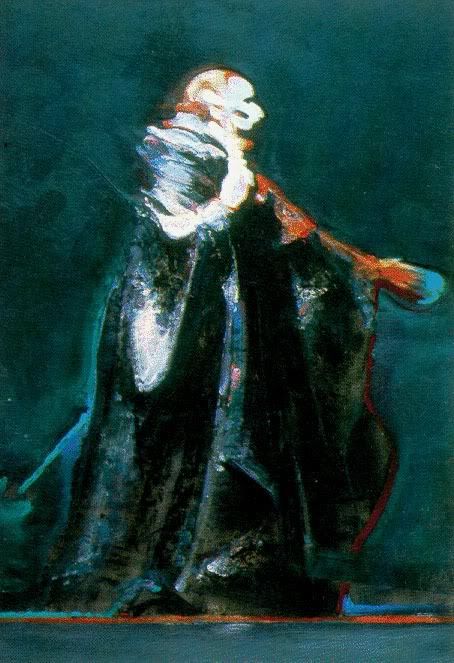
. . . . . . . . . . . . . . . . . . . . . . . . . . . . . . . . .
"Why so silent, good messieurs? Did you think that I had left you for good..."
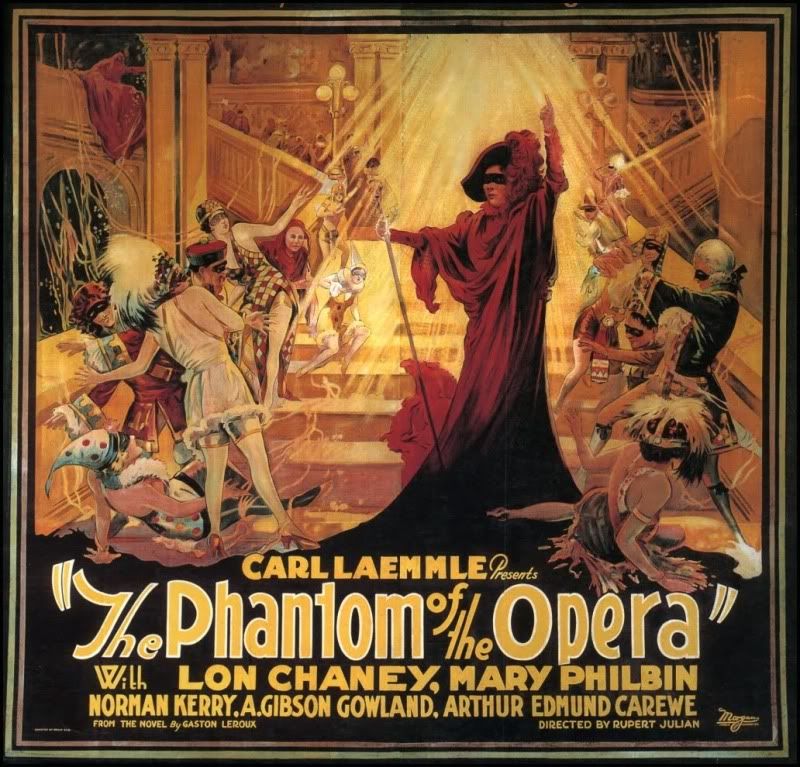
Megan introduced me to the idea that the short story "The Masque of the Red Death" by Edgar Allen Poe may very well have inspired the costuming and overall feeling of peril adopted by Andrew Lloyd Webber for the first scene of the musical's second act, "Masquerade."
Here's an excerpt I found especially befitting:
"It was in this apartment, also, that there stood against the western wall, a gigantic clock of ebony. Its pendulum swung to and fro with a dull, heavy, monotonous clang; and when the minute-hand made the circuit of the face, and the hour was to be stricken, there came from the brazen lungs of the clock a sound which was clear and loud and deep and exceedingly musical, but of so peculiar a note and emphasis that, at each lapse of an hour, the musicians of the orchestra were constrained to pause, momentarily, in their performance, to hearken to the sound; and thus the waltzers perforce ceased their evolutions; and there was a brief disconcert of the whole gay company; and, while the chimes of the clock yet rang, it was observed that the giddiest grew pale, and the more aged and sedate passed their hands over their brows as if in confused reverie or meditation. But when the echoes had fully ceased, a light laughter at once pervaded the assembly; the musicians looked at each other and smiled as if at their own nervousness and folly, and made whispering vows, each to the other, that the next chiming of the clock should produce in them no similar emotion; and then, after the lapse of sixty minutes,
(which embraces three thousand and six hundred seconds of the Time that flies,)
there came yet another chiming of the clock, and then were the same disconcert and tremulousness and meditation as before."
. . . . . . . . . . . . . . . . . . . . . . . . . . . . . . . . .
"God give me courage to show you, you are not alone."
Last but not least, I came across a verse the other day that reminded me of what I believe to be one of the most profound themes belonging to the famed story, regardless of the medium in which it takes form...
Psalm 39:5
"You have made my days a mere handbreadth; the span of my years is as nothing before you. Each man's life is but a breath.
Man is a mere phantom as he goes to and fro:
He bustles about, but only in vain; he heaps up wealth, not knowing who will get it.
But now, Lord, what do I look for?
My hope is in you."







No comments:
Post a Comment